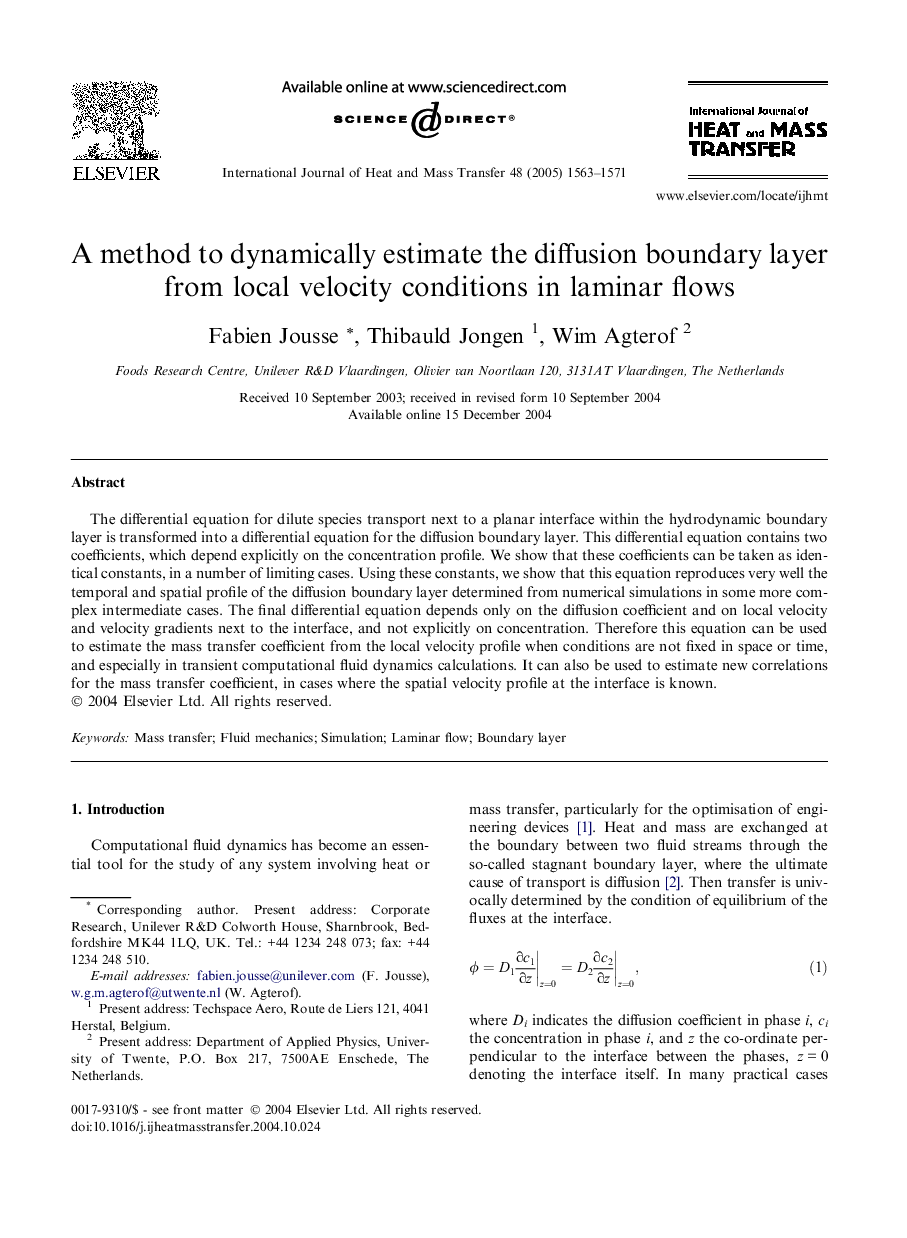| Article ID | Journal | Published Year | Pages | File Type |
|---|---|---|---|---|
| 9691596 | International Journal of Heat and Mass Transfer | 2005 | 9 Pages |
Abstract
The differential equation for dilute species transport next to a planar interface within the hydrodynamic boundary layer is transformed into a differential equation for the diffusion boundary layer. This differential equation contains two coefficients, which depend explicitly on the concentration profile. We show that these coefficients can be taken as identical constants, in a number of limiting cases. Using these constants, we show that this equation reproduces very well the temporal and spatial profile of the diffusion boundary layer determined from numerical simulations in some more complex intermediate cases. The final differential equation depends only on the diffusion coefficient and on local velocity and velocity gradients next to the interface, and not explicitly on concentration. Therefore this equation can be used to estimate the mass transfer coefficient from the local velocity profile when conditions are not fixed in space or time, and especially in transient computational fluid dynamics calculations. It can also be used to estimate new correlations for the mass transfer coefficient, in cases where the spatial velocity profile at the interface is known.
Related Topics
Physical Sciences and Engineering
Chemical Engineering
Fluid Flow and Transfer Processes
Authors
Fabien Jousse, Thibauld Jongen, Wim Agterof,
